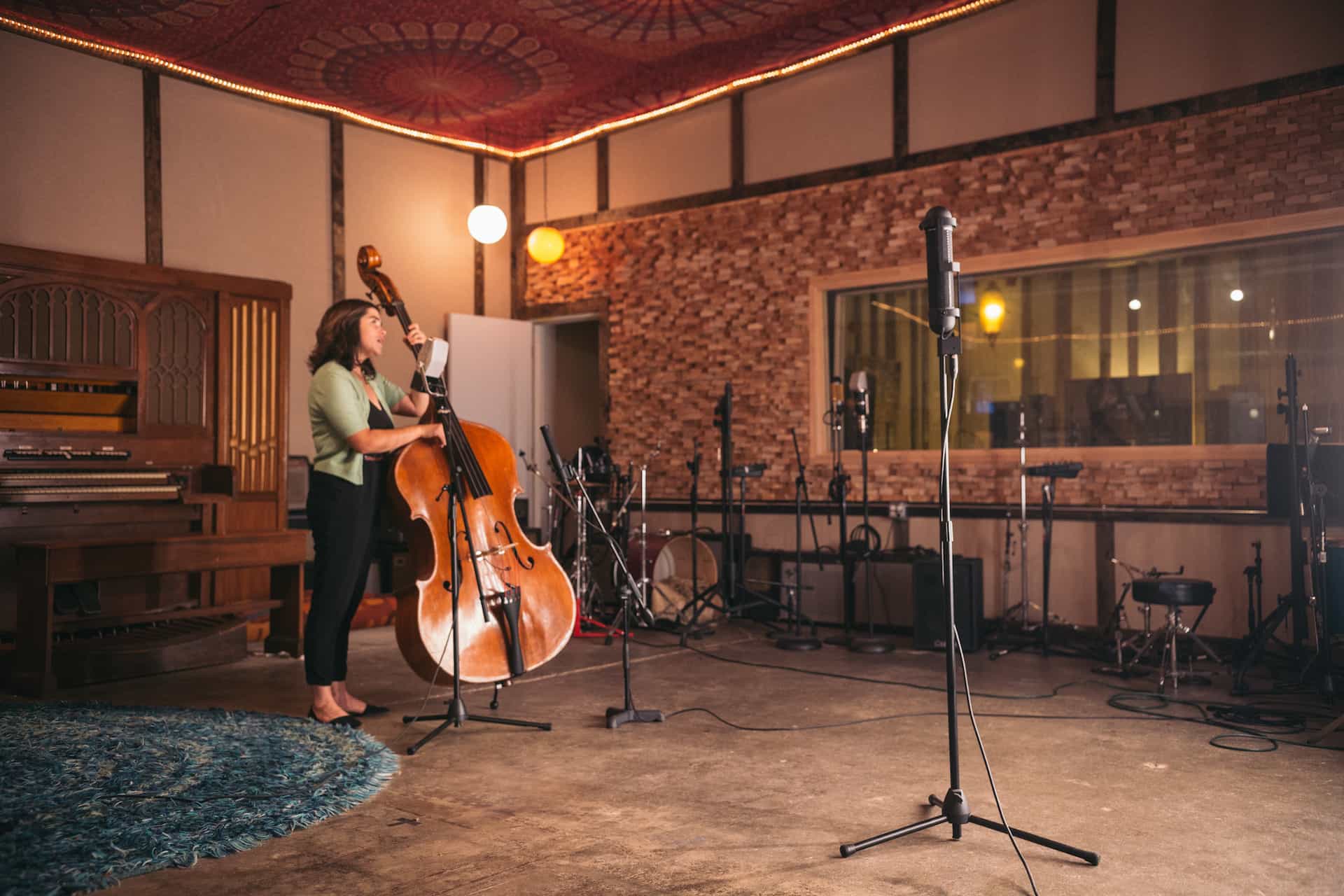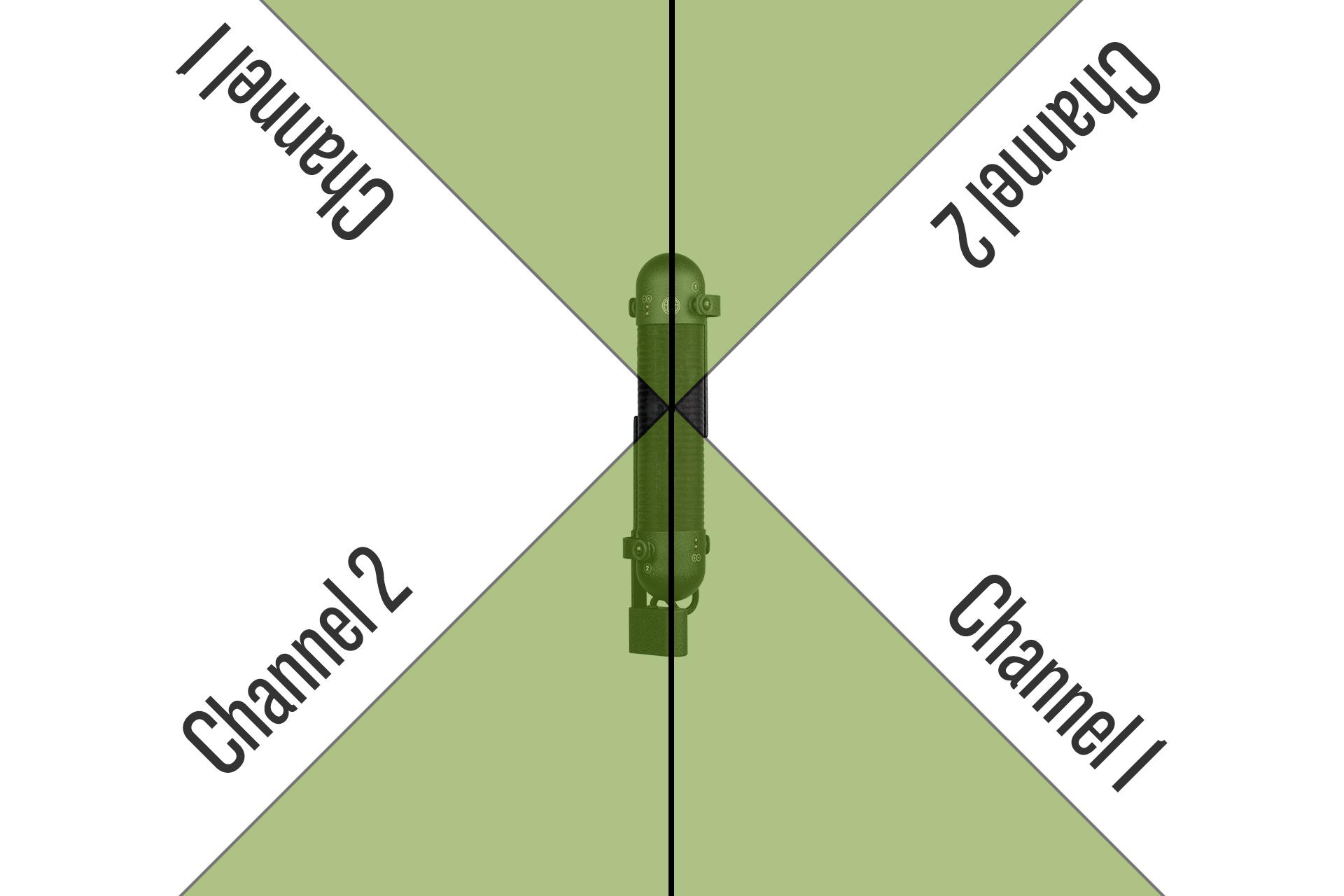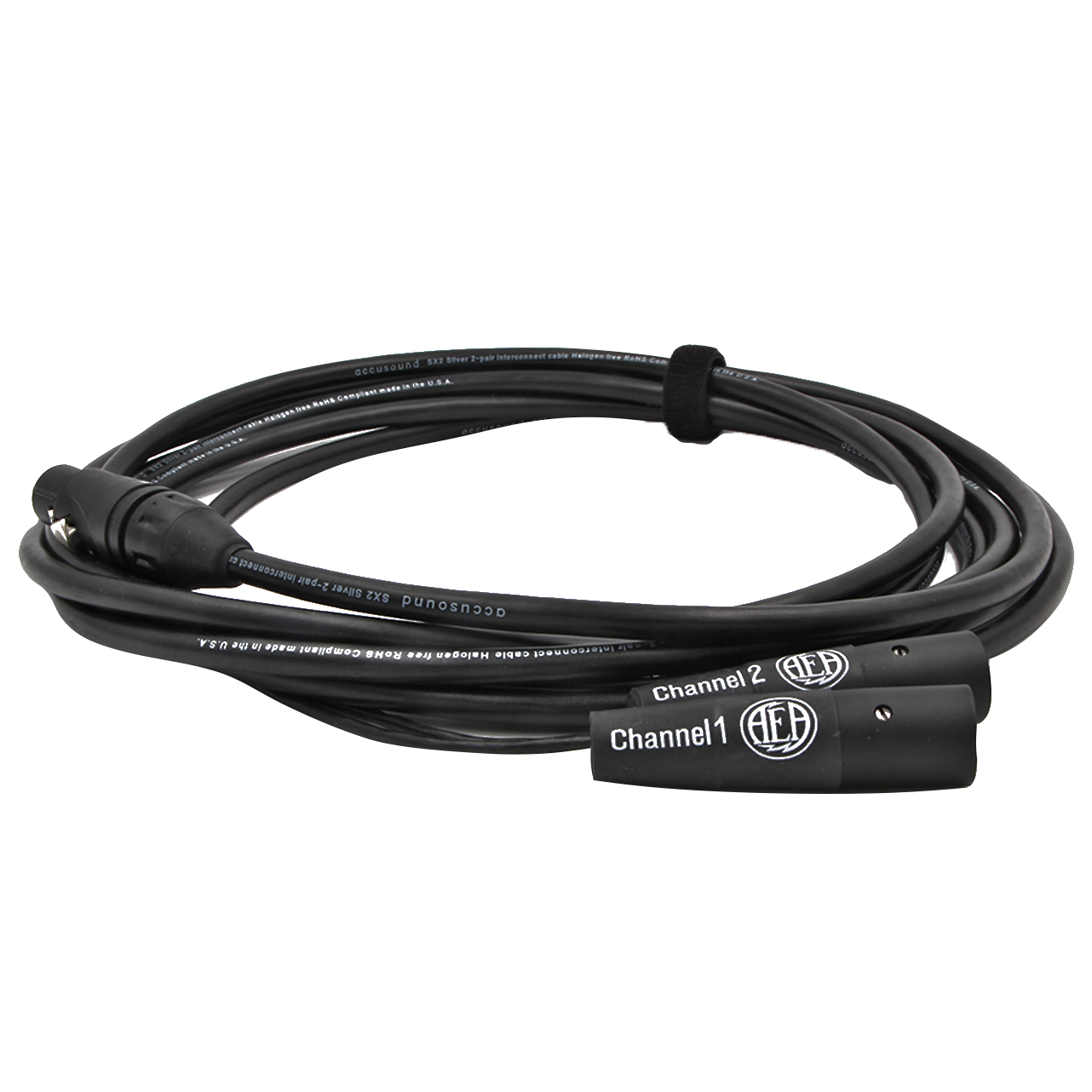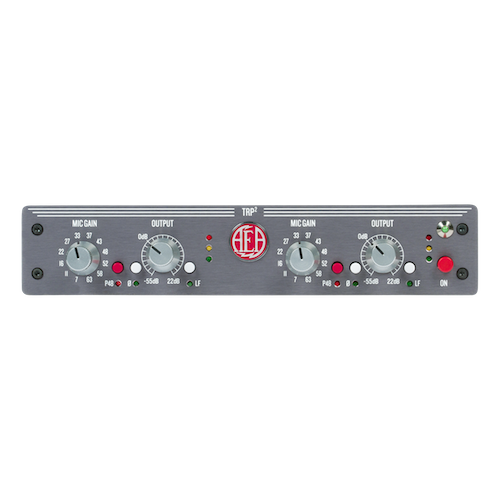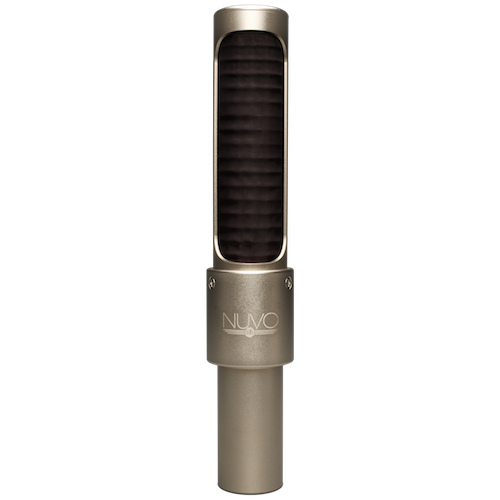The natural character and expansive tonal range of the R88 make it an exceptional mic for recording upright bass. Its far-field functionality and dual figure-of-8 polar patterns allow for the blending of the direct sound of your instrument with expansive, dimensional room sound.
Close Miking
When recording upright bass, try positioning the R88 between 1 and 4 feet in front of the instrument with the white line aimed directly at the center of it. This will give you a balanced stereo spread in the two channels of the microphone. Because the two ribbon elements are perfectly in phase with one another you can pan the two channels however you wish. Most engineers start with channel 1 panned hard to the left and channel 2 panned hard to the right. This creates the largest and most realistic stereo width.
Within that range, the R88 can be moved closer or farther from the instrument to temper the amount of low-end proximity effect. Typically the upright bass is best recorded at a height where the neck meets the body; this yields a well-blended sound from the sound hole and the bowed/plucked strings.
Distant Miking
Like other acoustic instruments, much of the upright bass’ sound comes from the room it inhabits, so accurately capturing that room sound is vital in achieving a comprehensive tonality. With this in mind, experiment with the vast spatial range of the R88 and its great capacity for far-field applications. The R88 delivers an astonishingly balanced treble/bass ratio from as far as 20 feet away.
